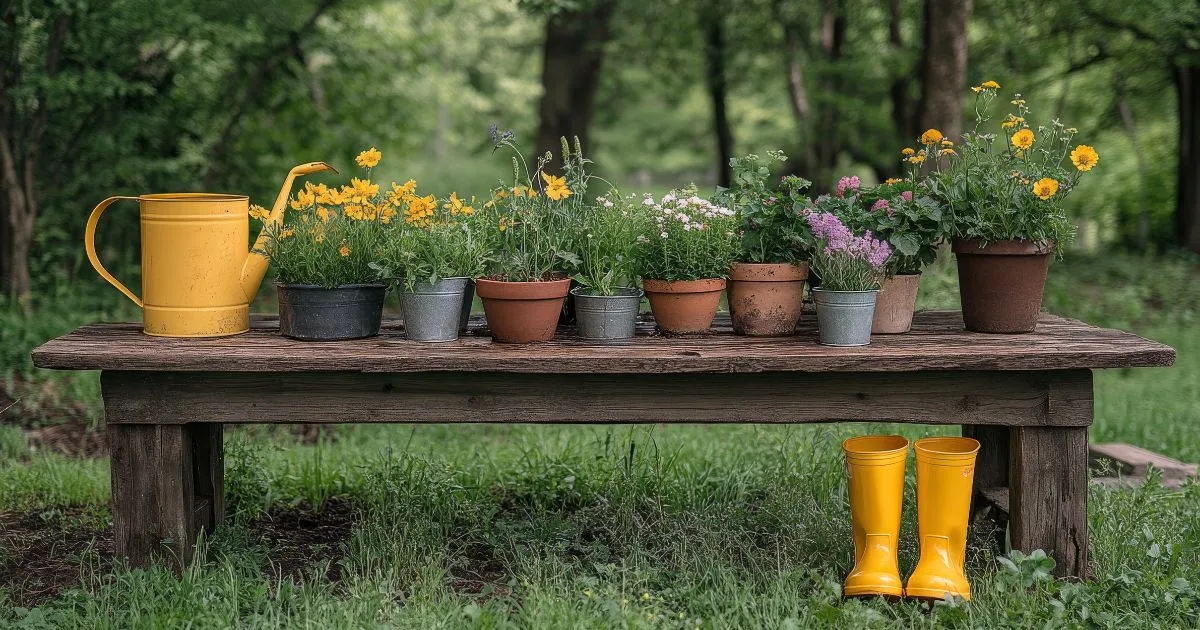Table of Contents
Gardening is a rewarding hobby that allows you to connect with nature, grow your own food, and create a beautiful outdoor space. However, to make the most of your gardening experience, you need the right tools and equipment. One essential piece of furniture that every gardener should consider is an outdoor garden potting bench. This versatile piece of furniture can transform your gardening routine, making it more efficient, organized, and enjoyable. In this comprehensive guide, we’ll explore everything you need to know about outdoor garden potting benches, from their benefits and features to how to choose the right one for your needs.
What is an Outdoor Garden Potting Bench?
An outdoor garden potting bench is a sturdy work surface designed specifically for gardening tasks. It typically includes a flat workspace, storage shelves, and compartments for holding pots, soil, tools, and other gardening essentials. Think of it as a dedicated workstation for all your gardening activities, whether you’re repotting plants, starting seeds, or organizing your tools.
Outdoor garden potting benches come in various sizes, styles, and materials, making them suitable for gardens of all shapes and sizes. They are designed to withstand outdoor conditions, ensuring durability and longevity.
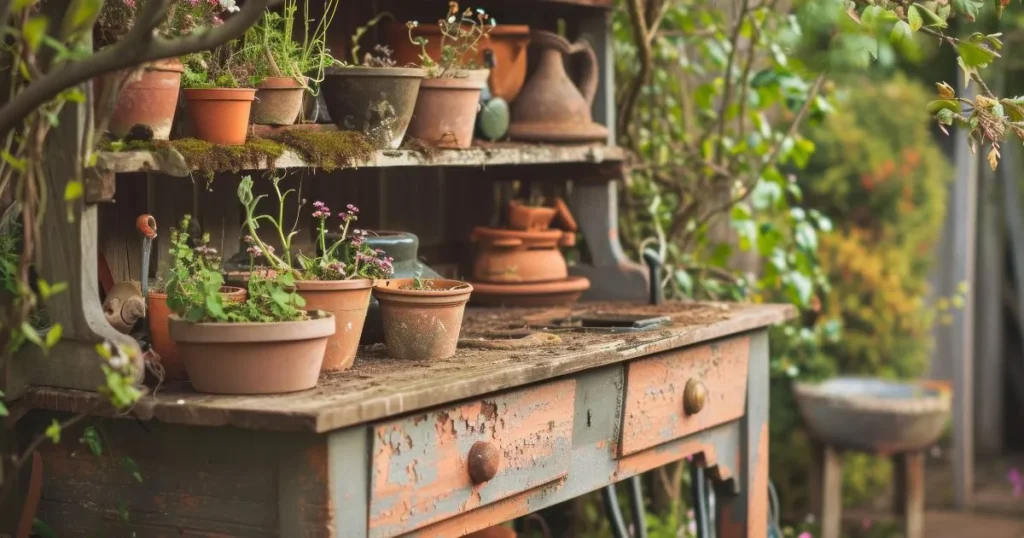
Benefits of an Outdoor Garden Potting Bench
1. Improved Organization
One of the primary benefits of an outdoor garden potting bench is that it helps keep your gardening tools and supplies organized. With designated spaces for pots, soil, and tools, you’ll spend less time searching for what you need and more time enjoying your garden.
2. Ergonomic Design
Gardening can be hard on your back and knees, especially if you’re working on the ground. A potting bench provides a raised work surface, allowing you to work comfortably while standing. This ergonomic design reduces strain and makes gardening more enjoyable.
3. Enhanced Efficiency
Having all your tools and supplies within arm’s reach significantly improves efficiency. Whether you’re transplanting seedlings or mixing soil, an outdoor garden potting bench ensures that everything you need is right where you need it.
4. Protection for Your Plants
Working on a potting bench helps protect your plants from pests and diseases that may be present in the soil. By keeping your plants elevated, you reduce the risk of contamination and ensure healthier growth.
5. Aesthetic Appeal
An outdoor garden potting bench can also enhance the visual appeal of your garden. Many benches are designed with aesthetics in mind, featuring stylish finishes and designs that complement your outdoor space.
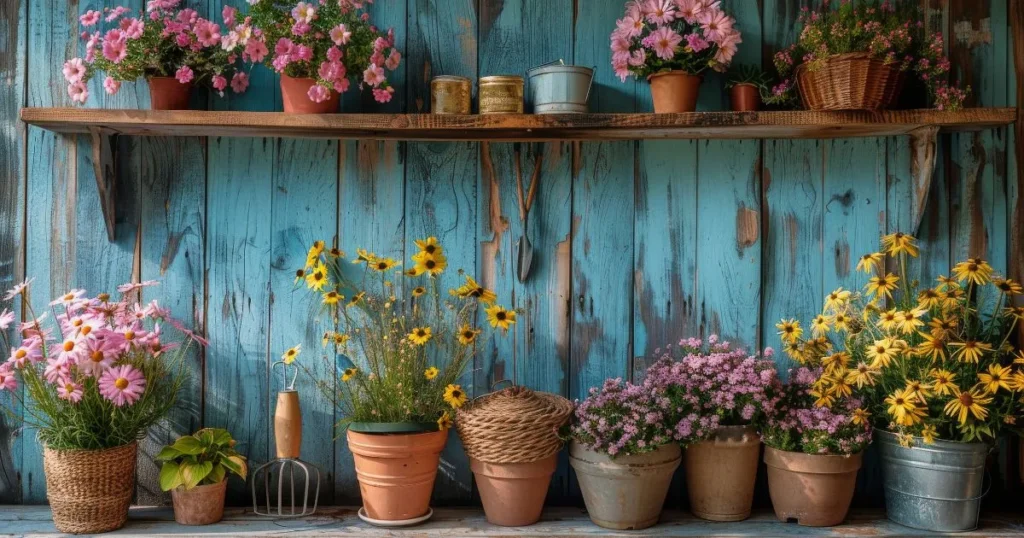
Key Features to Look for in an Outdoor Garden Potting Bench
When choosing an outdoor garden potting bench, it’s important to consider the features that will best suit your needs. Here are some key features to look for:
1. Durable Materials
Since the bench will be exposed to the elements, it’s essential to choose one made from durable materials. Common options include:
- Wood: Cedar, teak, and redwood are popular choices due to their natural resistance to rot and insects.
- Metal: Steel or aluminum benches are sturdy and long-lasting but may require rust-resistant coatings.
- Plastic: Lightweight and affordable, plastic benches are easy to clean but may not be as durable as wood or metal.
2. Work Surface
The work surface should be spacious enough to accommodate your gardening tasks. Look for a bench with a smooth, easy-to-clean surface. Some benches even come with built-in trays or grooves to catch soil and water.
3. Storage Options
Storage is a crucial feature of any outdoor garden potting bench. Look for benches with shelves, drawers, or hooks for holding tools, pots, and other supplies. Adjustable shelves can provide added flexibility.
4. Mobility
If you plan to move your bench around the garden, consider one with wheels or a lightweight design. This feature is especially useful for larger gardens or if you need to store the bench during the winter months.
5. Weather Resistance
Ensure that the bench is designed to withstand outdoor conditions. Look for features like weather-resistant finishes, rust-proof hardware, and UV protection.
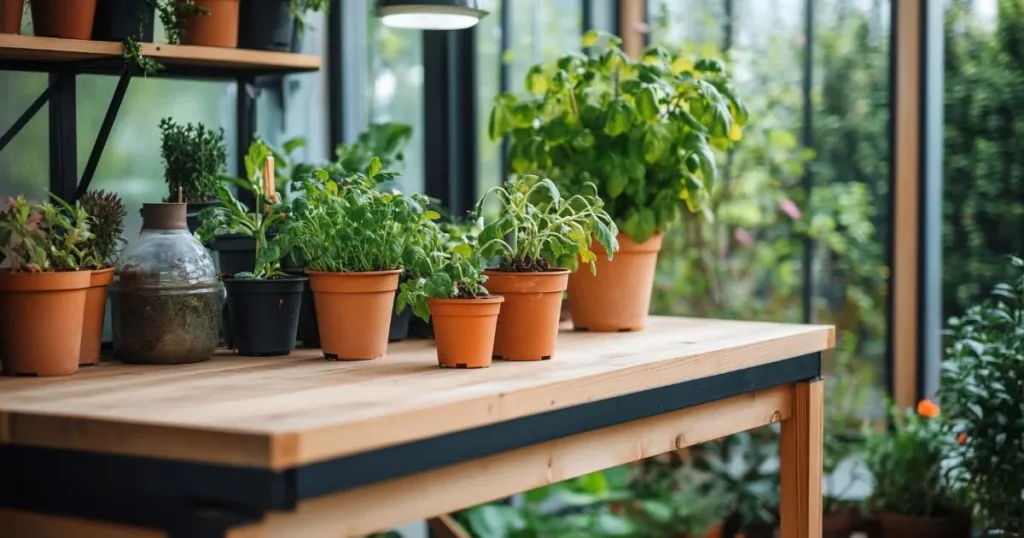
Types of Outdoor Garden Potting Benches
There are several types of outdoor garden potting benches to choose from, each with its own unique advantages. Here are some popular options:
1. Freestanding Potting Benches
Freestanding benches are the most common type and can be placed anywhere in your garden. They are versatile and often come with a variety of storage options.
2. Wall-Mounted Potting Benches
If you’re short on space, a wall-mounted bench is a great option. These benches are attached to a wall or fence, saving floor space while still providing a functional work surface.
3. Foldable Potting Benches
Foldable benches are ideal for those with limited storage space. They can be easily folded and stored when not in use, making them a practical choice for small gardens or balconies.
4. Custom-Built Potting Benches
For those who want a personalized touch, custom-built benches allow you to design a potting bench that meets your specific needs. You can choose the materials, dimensions, and features that work best for your garden.
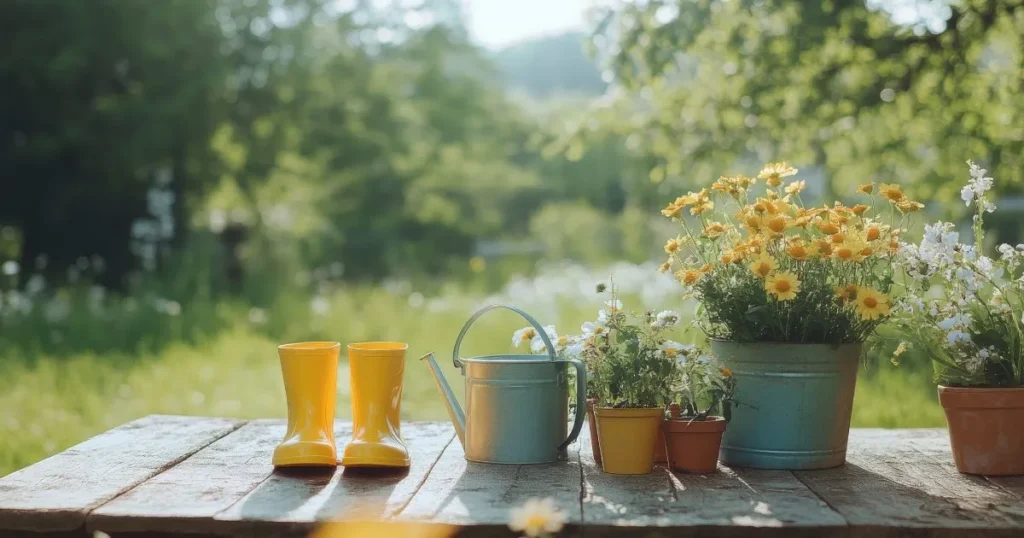
How to Choose the Right Outdoor Garden Potting Bench
Choosing the right outdoor garden potting bench depends on several factors, including your gardening needs, available space, and budget. Here are some tips to help you make the right choice:
1. Assess Your Gardening Needs
Consider the types of tasks you’ll be using the bench for. If you frequently repot plants or start seeds, look for a bench with ample workspace and storage for soil and pots. If you primarily use it for tool storage, prioritize shelves and hooks.
2. Measure Your Space
Before purchasing a bench, measure the area where you plan to place it. Ensure that the bench fits comfortably in the space without obstructing pathways or other garden features.
3. Set a Budget
Outdoor garden potting benches come in a wide range of prices. Determine your budget beforehand and look for a bench that offers the best value for your money.
4. Consider Maintenance
Some materials require more maintenance than others. For example, wooden benches may need periodic sealing or staining, while metal benches may require rust prevention. Choose a bench that fits your maintenance preferences.
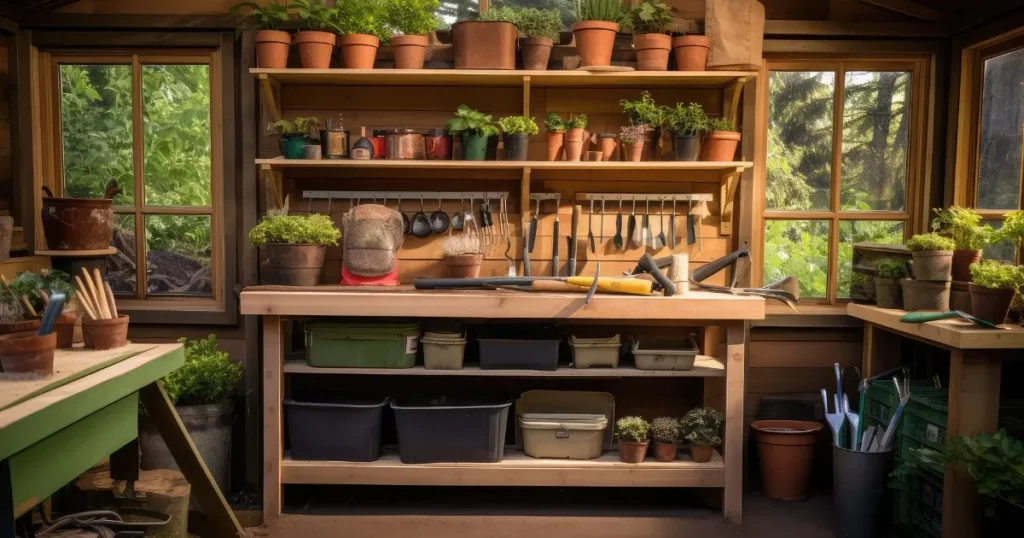
DIY Outdoor Garden Potting Bench: Is It Worth It?
If you’re handy with tools, building your own outdoor garden potting bench can be a rewarding project. DIY benches allow you to customize the design and features to suit your needs. However, keep in mind that building a bench requires time, effort, and access to tools and materials. If you’re not confident in your DIY skills, purchasing a pre-made bench may be a better option.
Maintaining Your Outdoor Garden Potting Bench
To ensure the longevity of your outdoor garden potting bench, regular maintenance is essential. Here are some tips to keep your bench in top condition:
1. Clean Regularly
Wipe down the bench after each use to remove dirt and debris. For wooden benches, avoid using harsh chemicals that can damage the finish.
2. Protect from the Elements
If possible, cover your bench during harsh weather conditions or store it indoors during the winter months. This will help prevent damage from rain, snow, and UV rays.
3. Inspect for Damage
Periodically check your bench for signs of wear and tear, such as loose screws, cracks, or rust. Address any issues promptly to prevent further damage.
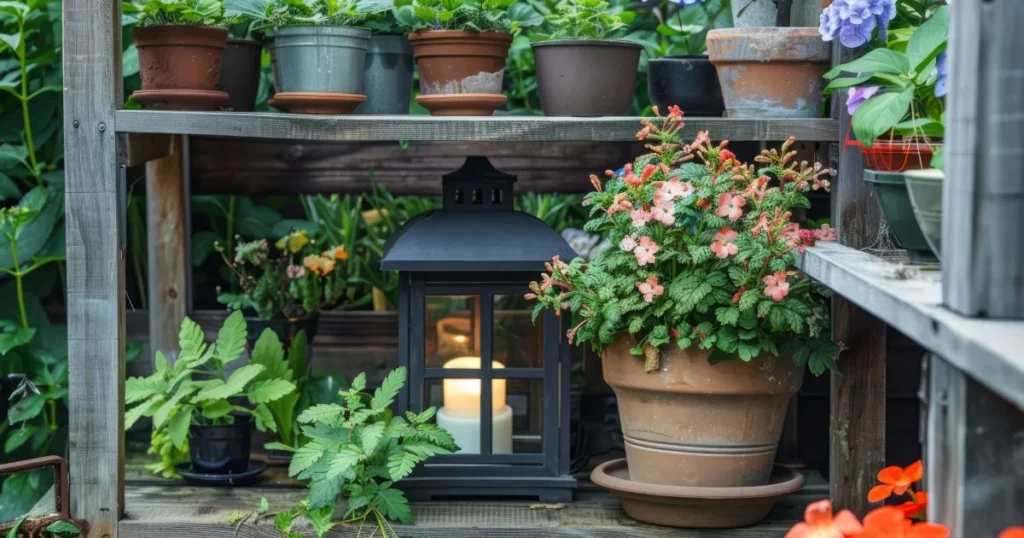
Conclusion
An outdoor garden potting bench is a valuable addition to any garden, offering a dedicated workspace for all your gardening tasks. From improving organization and efficiency to enhancing the aesthetic appeal of your outdoor space, a potting bench can transform the way you garden. By considering factors like materials, storage options, and maintenance, you can choose the perfect bench to meet your needs. Whether you opt for a pre-made model or decide to build your own, an outdoor garden potting bench is sure to become an indispensable tool in your gardening arsenal.
FAQs About Outdoor Garden Potting Benches
1. What is the best material for an outdoor garden potting bench?
The best material depends on your preferences and budget. Wood is a popular choice for its natural look and durability, while metal and plastic offer low-maintenance alternatives.
2. Can I leave my potting bench outside all year?
While most potting benches are designed for outdoor use, it’s a good idea to cover or store them during harsh weather to extend their lifespan.
3. How do I clean my potting bench?
Use a mild soap and water solution to clean the surface. Avoid harsh chemicals, especially on wooden benches.
4. Can I customize my potting bench?
Yes, many potting benches come with adjustable shelves or hooks, allowing you to customize the storage options to suit your needs.
5. Are foldable potting benches durable?
Foldable benches can be durable, but they may not be as sturdy as freestanding or wall-mounted models. Choose one made from high-quality materials for added durability.
6. How much weight can a potting bench hold?
The weight capacity varies depending on the materials and design. Check the manufacturer’s specifications to ensure the bench can support your tools and supplies.
7. Can I use a potting bench for other purposes?
Absolutely! While designed for gardening, a potting bench can also be used as a general outdoor workbench for DIY projects or crafts.

